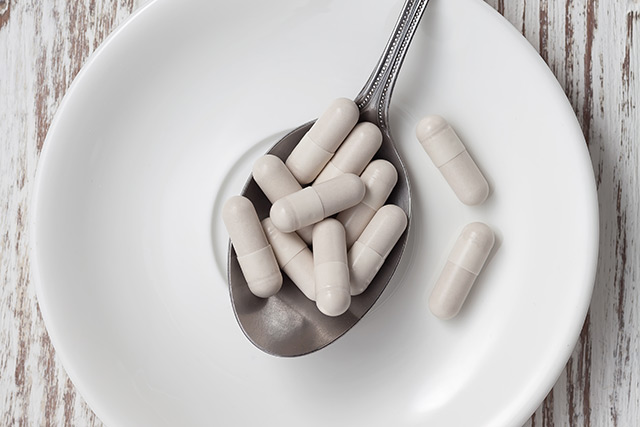 Parler
Parler Gab
Gab
- Scientists decoded the genome of Mitragyna parvifolia, identifying three never-before-seen enzymes that assemble mitraphylline—a compound with demonstrated anti-cancer properties.
- Young leaves contain the highest concentrations of mitraphylline, suggesting the plant prioritizes chemical defense in its early growth stages.
- The tree’s genetic structure is tetraploid, meaning it has four copies of each chromosome, which may explain its ability to produce diverse alkaloids.
- By inserting these genes into tobacco plants, researchers successfully replicated mitraphylline production—a breakthrough for scalable, lab-based synthesis.
- The findings could pave the way for new anti-inflammatory and anti-cancer treatments derived from natural plant chemistry.
The molecular assembly line inside a leaf
Plants have long been master chemists, crafting intricate molecules that modern science struggles to replicate. But until now, the exact steps Mitragyna parvifolia takes to build mitraphylline remained a mystery. The research team discovered three enzymes working in sequence, each performing a precise transformation. The first two enzymes flip ajmalicine—a common plant alkaloid—into its mirror-image form, while the third reshapes it into mitraphylline’s distinctive twisted structure. “This is like finding the missing links in an assembly line,” says Dr. Thu-Thuy Dang, a lead researcher on the project. Without any one of these enzymes, the process stalls. The discovery is particularly exciting because mitraphylline’s unique architecture—a spirooxindole—has shown promise in lab studies for slowing cancer cell growth. Yet, extracting meaningful quantities from wild plants has been impractical. Now, with the genetic blueprint in hand, scientists can engineer microbes or plants to produce it consistently, bypassing the challenges of traditional harvesting.Why young leaves hold the key
Like many medicinal plants, M. parvifolia concentrates its most potent compounds in its youngest leaves—likely as a defense against pests and pathogens. The study found that genes involved in mitraphylline production were far more active in tender foliage than in mature leaves or stems. This mirrors patterns seen in other plants, where chemical defenses are strongest during vulnerable growth phases. The tree’s tetraploid genetics—a doubling of its chromosomes—may also explain why it produces such a rich mix of alkaloids. Similar genetic expansions have been observed in coffee and quinine-producing plants, suggesting a shared evolutionary strategy for chemical diversity. “Plants are fantastic natural chemists,” Dr. Dang notes. “Their ability to evolve new biochemical pathways is unparalleled.” Historically, drug discovery has relied on isolating rare compounds from plants, often at great ecological and financial cost. But with mitraphylline’s genetic pathway now mapped, researchers can explore synthetic biology solutions. The team proved this by inserting the genes into tobacco plants, which successfully converted ajmalicine into mitraphylline, a crucial proof of concept. This approach could revolutionize how we access plant-based medicines. Instead of depending on slow-growing tropical trees, scientists might one day produce mitraphylline in yeast or bacteria, ensuring a stable supply for research and potential therapies. The implications extend beyond cancer treatment; mitraphylline’s anti-inflammatory properties could also make it valuable for conditions like arthritis and autoimmune disorders. While M. parvifolia has been overshadowed by its psychoactive cousin, kratom, this research highlights its untapped medicinal potential. The study bridges traditional herbal knowledge and cutting-edge biotechnology, offering a glimpse into how nature’s oldest remedies might inform tomorrow’s treatments. As science continues to unravel the secrets of plant chemistry, one thing becomes clear: the forests still hold answers we’ve only begun to understand. Modern medical scientific research should re-direct its focus to herbalism. Sources include: StudyFinds.org Academic.oup.com ScienceDirect.com HumanJournals.com [PDF]By Lance D Johnson // Share
“Regenesis” on BrightU: The toxic modern world, autoimmunity and hormonal dysfunction
By Jacob Thomas // Share
Dr. Richard Schulze’s five-day liver detox program offers a natural path to renewed energy
By Belle Carter // Share
The master antioxidant: How GLUTATHIONE protects health and how to boost it naturally
By Evangelyn Rodriguez // Share
High‑normal potassium levels cut arrhythmia risk by 24% in ICD patients: POTCAST trial shows promise
By Patrick Lewis // Share
Governments continue to obscure COVID-19 vaccine data amid rising concerns over excess deaths
By patricklewis // Share
Tech giant Microsoft backs EXTINCTION with its support of carbon capture programs
By ramontomeydw // Share
Germany to resume arms exports to Israel despite repeated ceasefire violations
By isabelle // Share










